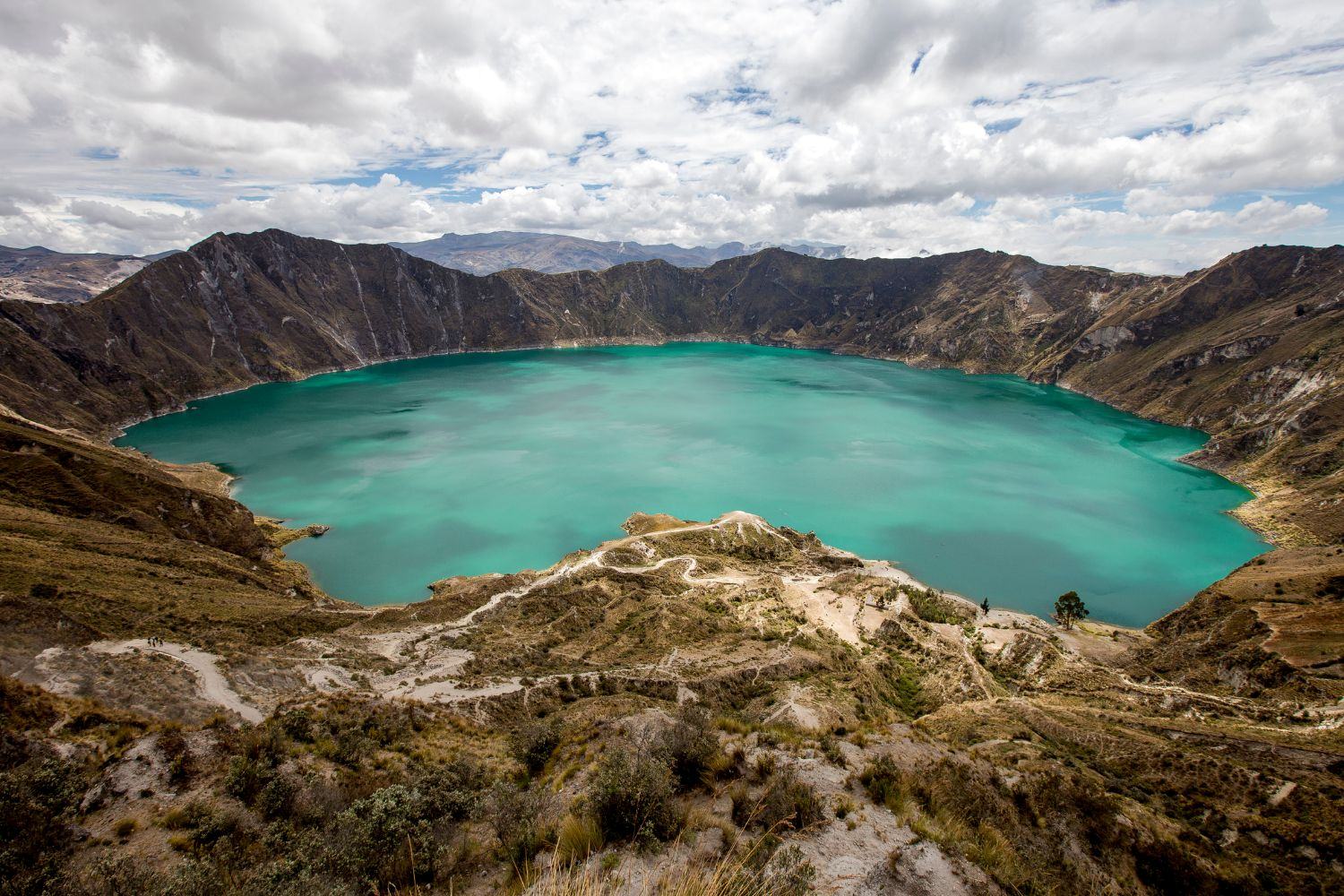
Calderas are some of the most awe-inspiring geological formations on Earth. But what exactly are they? Calderas are large, basin-like depressions that form following the collapse of a volcano. These natural wonders can be found all over the world, from the famous Yellowstone in the United States to the Aso in Japan. They offer a glimpse into the powerful forces shaping our planet. Whether you're a geology enthusiast or just curious about nature, learning about calderas can be both fascinating and educational. Ready to dive into 26 amazing facts about these incredible formations? Let's get started!
What is a Caldera?
A caldera is a large volcanic crater formed by a major eruption leading to the collapse of the mouth of the volcano. These geological formations are fascinating and often misunderstood. Let's dive into some intriguing facts about calderas.
-
Calderas are typically formed when a magma chamber empties during a volcanic eruption, causing the ground above to collapse.
-
The term "caldera" comes from the Spanish word for "cauldron," reflecting their large, bowl-like shape.
-
Calderas can be tens of kilometers in diameter, making them some of the largest volcanic features on Earth.
-
Some calderas are filled with water, forming beautiful crater lakes. Crater Lake in Oregon is a prime example.
Famous Calderas Around the World
Several calderas have gained fame due to their size, beauty, or volcanic activity. Here are some notable ones:
-
Yellowstone Caldera in the United States is one of the largest active calderas, spanning about 30 by 45 miles.
-
The Aira Caldera in Japan is home to the active Sakurajima volcano, which frequently erupts.
-
Indonesia's Toba Caldera is known for its massive eruption around 74,000 years ago, which had global climatic effects.
-
Santorini Caldera in Greece is famous for its stunning views and historical significance, linked to the Minoan civilization.
Formation and Types of Calderas
Calderas can form in different ways and come in various types. Understanding these can shed light on their complexity.
-
Explosive Calderas form from violent eruptions that eject large volumes of magma, leading to a collapse.
-
Non-explosive Calderas result from the gradual withdrawal of magma, causing the ground to sink slowly.
-
Resurgent Calderas experience uplift in the center after the initial collapse, creating a dome-like structure.
-
Calderas can also form underwater, known as submarine calderas, found in oceanic volcanic regions.
Ecological and Geological Importance
Calderas play a significant role in both ecology and geology, influencing landscapes and ecosystems.
-
Calderas often host unique ecosystems due to their isolated and varied environments.
-
The nutrient-rich soils in calderas support diverse plant life, contributing to biodiversity.
-
Calderas can act as natural laboratories for studying volcanic activity and geological processes.
-
Some calderas are sources of geothermal energy, providing renewable energy options.
Human Interaction with Calderas
Humans have interacted with calderas in various ways, from settlement to scientific study.
-
Many ancient civilizations settled around calderas due to fertile soils and abundant water sources.
-
Modern tourism thrives in caldera regions, with visitors drawn to their natural beauty and geological significance.
-
Scientists study calderas to understand volcanic activity and predict future eruptions, aiding in disaster preparedness.
-
Some calderas are considered sacred or hold cultural significance for local communities.
Risks and Hazards of Calderas
Despite their beauty, calderas pose significant risks due to their volcanic nature.
-
Calderas can produce catastrophic eruptions, with widespread ashfall and pyroclastic flows.
-
The collapse of a caldera can trigger tsunamis if it occurs underwater or near large bodies of water.
-
Volcanic gases released from calderas can be hazardous to health, affecting air quality and climate.
-
Monitoring calderas is crucial for early warning systems to protect nearby populations from volcanic hazards.
Interesting Tidbits about Calderas
Here are some lesser-known but fascinating facts about calderas that highlight their unique characteristics.
-
Some calderas have multiple smaller craters within them, known as nested calderas.
-
Calderas can remain active for millions of years, with periods of dormancy between eruptions.
The Final Word on Caldera
Caldera, with its rich history and unique geography, offers a treasure trove of fascinating facts. From its volcanic origins to its role in scientific research, this natural wonder continues to captivate. The biodiversity within calderas is astounding, providing habitats for numerous species. Moreover, calderas have significant cultural importance in many regions, often linked to myths and legends.
Understanding calderas not only enriches our knowledge of geological processes but also highlights the interconnectedness of natural systems. Whether you're a science enthusiast or just curious about the world, calderas offer endless opportunities for exploration and discovery. So next time you come across a caldera, take a moment to appreciate its complex beauty and the stories it holds. Keep exploring, keep learning, and let the wonders of nature inspire you.
Was this page helpful?
Our commitment to delivering trustworthy and engaging content is at the heart of what we do. Each fact on our site is contributed by real users like you, bringing a wealth of diverse insights and information. To ensure the highest standards of accuracy and reliability, our dedicated editors meticulously review each submission. This process guarantees that the facts we share are not only fascinating but also credible. Trust in our commitment to quality and authenticity as you explore and learn with us.
